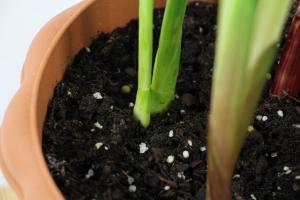Introduction
Water lilies are not just beautiful aquatic plants, but also beneficial for the ecosystem of natural ponds. They offer shelter to aquatic creatures, release oxygen and absorb harmful chemicals from the water. Planting water lilies is a simple and rewarding task that can be done in a few steps. Here's how to plant water lilies in a natural pond.
Step 1: Choose the Right Lily Variety
The first step in planting water lilies is to choose the right variety for your pond. There are two types of water lilies: hardy and tropical. Hardy water lilies can survive the winter and are best suited for cooler climates. Tropical water lilies require warmer temperatures and cannot tolerate frost. Make sure to choose a water lily variety that is suited to your pond's location.
Step 2: Prepare the Planting Container
Water lilies require a planting container to grow in. Choose a container that is large enough to accommodate the plant's mature size. Fill the container with a mix of clay and topsoil, making sure it is evenly mixed. Gently press the soil and clay mixture down into the container.
Step 3: Plant the Water Lily
Remove the water lily from its pot and rinse off any excess soil or debris. Place the water lily in the center of the container, making sure its roots are spread out evenly. Cover the roots and the base of the plant with the soil and clay mixture. Take care not to cover the plant's crown, which is the area where the leaves and stem meet.
Step 4: Place the Container in the Pond
After planting the water lily, place the container in the part of the pond where the plant will receive at least 4-6 hours of sunlight per day. The water lily should be placed in water that is at least 18 inches deep. If the water is too shallow, the plant may not receive enough nutrients to grow properly.
Step 5: Add Fertilizer
Water lilies require regular fertilizer to thrive. Use a slow-release fertilizer designed specifically for water lilies. Add the fertilizer to the container according to the manufacturer's instructions. Be careful not to over-fertilize, as this can harm the plant.
Step 6: Monitor the Water Quality
Regularly monitor the water quality of your pond to ensure that the water lily is receiving the nutrients it needs. Test the water's pH levels and adjust if necessary. Remove any debris or dead plant matter from the surface of the water, as this can impact the water's nutrient levels.
Conclusion
Water lilies are a beautiful addition to any natural pond, and planting them is a simple and rewarding task. By choosing the right variety, preparing the planting container, and placing the container in the right spot, you can help your water lily thrive. Regular fertilization and water quality monitoring will ensure that the plant receives the nutrients it needs to grow well. Follow these steps and enjoy the beautiful sight of water lilies blooming in your pond.

 how many times do yo...
how many times do yo... how many planted tre...
how many planted tre... how many pine trees ...
how many pine trees ... how many pecan trees...
how many pecan trees... how many plants comp...
how many plants comp... how many plants can ...
how many plants can ... how many plants and ...
how many plants and ... how many pepper plan...
how many pepper plan...




























